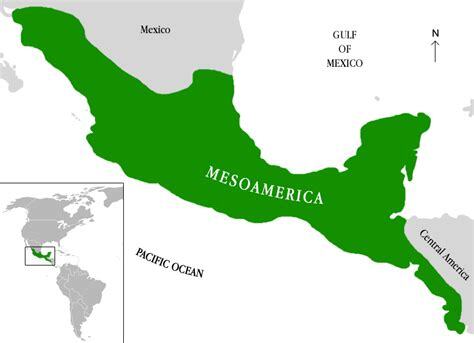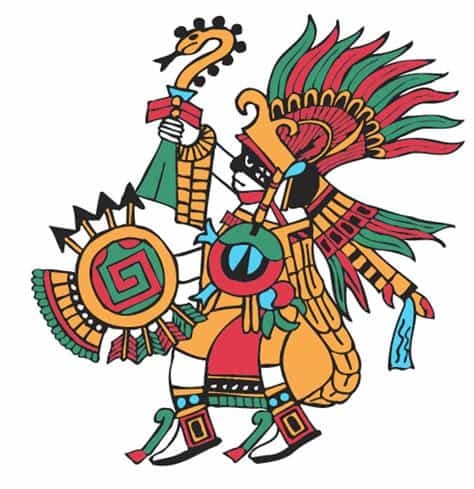I’ve taken on the role of writing about experiential chocolate travel. That means writing about contemporary chocolate events, attractions, and cuisine, meeting chocolate makers and chocolatiers, and visiting cacao farmers in the countries where cocoa is grown. So I welcomed the opportunity to publish the guest post below by Jeremy Hill about chocolate and the Aztecs, and how cacao played a key role in the mysticism of Aztec culture.
But prior to the Aztecs’ use of cacao, there is archaeological evidence that the Olmecs (of what is now Mexico) were consuming cacao dating back 3,500 years ago. And a more recent discovery proves that cacao was consumed by the people of Southern Ecuador 5,400 years ago, substantiating a very long relationship the human race has had with our beloved cacao. Here’s Jeremy’s post that focuses on the Aztecs and cacao’s transition into more modern times.
 how cacao was introduced into modern civilization
how cacao was introduced into modern civilization
compiled by Jeremy Hill, edited by Doreen Pendgracs (with free images sourced online)
A variation of what we know as chocolate first came into existence in the cities of Southern Mexico and Central America. Theobroma Cacao–a tree bearing fruit contained within colourful pods–was considered to be a blessing from the divine. This tree was named Xocolatl by the Aztecs. Its magical fruit was not first discovered specifically by the Aztec people, but within already established Mesoamerican civilizations such as the Mayans and the Toltecs. The Aztecs were leaders in Mesoamerica from the 14th through 16th centuries and many of their traditions lived on long after their culture was in ruins.

a brief history of the Aztecs
The Aztec civilization started when the itinerant individuals, also known as Mexica migrated from the North in the 13th century. They come from Aztlan which many archeologists consider was an area that is at present in the southwestern United States.
They tried to settle in Anahuac Valley, at present in Mexico, yet were unable to discover a home where they wouldn’t meet with any antagonistic vibe from local societies. They rebounded around, yet didn’t surrender their search for a land to reconstruct in Aztlan.
A spot was chosen by them on an island in a lake known as Texcoco. The land wasn’t perfect for building as it was marshland, but they settled there anyway.
After many years, this city was turned into Tenochtitlan, which signifies ‘Place of Cactus Fruit.’ They flourished over the following 300 years, comprising a community of savage warriors, advanced agriculturists, and creative engineers.
The empire of the Aztecs was set up through the alliance of three urban communities – Tenochtitlan (Mexico), Texcoco, and Tlacopan. This structure empowered Tenochtitlan to occur as an urban and most populated city across the globe.
the lower class saved their beans
Aztec individuals were identified by several social strata, the most essential of which were the high society honorability, known as pilli, and the lower-class, known as macehualli. Slaves existed, but it was unlikely that you might see an individual of the slave classes or macehualli drinking chocolate. It was reserved for the upper class and considered the “food of the gods.” The lower classes saved their cacao beans to trade for other food.

It was believed that the Aztec god Quetzalcoatl (known as the feathered serpent) arrived on Earth as the god of creation, bearing the gift of a cacao tree for the Toltec people, and forever after, the Mesoamerican peoples worshipped the fruit of the cacao tree.
XOCOLATL is the word for what has come to be chocolate
The Aztecs spoke a dialect called Nahuatl which is known for having long words. Nahuatl roots can still be found in present-day Latin American lingos. For instance, the words ‘Coyote’ and ‘Chocolate’ are both established in Nahuatl. We can’t offer credit to the Aztecs for finding chocolate, yet the name they provide it, ‘Xocolatl’ has stood the test of time.
The Aztecs adopted the use and value of cacao beans from their Mesoamerican predecessors and followed the tradition of consuming their ‘chocolate’ as a savoury ceremonial drink that may have contained chili peppers, vanilla, and honey.
Montezuma–the ninth tlatoani or ruler of Tenochtitlan–reigned the Aztec world from 1502 to 1520. He maintained a storage room full of cocoa beans and drank the spicy chocolate drink several times a day to give him strength. Montezuma shared the elixir with his men who went to battle, believing that cacao made men strong and virile. That reverence to the powers of cacao remain to this day.
Contributor’s Bio:
Jeremy Hill is an American food blogger. His focus helps take the stress out of eating and enjoying healthy and satisfying food. Jeremy writes for chocolate.org, where you can buy an assortment of chocolate online. He considers himself to be an inspiration in the kitchen and is committed to bringing chocolate to your tables. Find a longer version of this story at: https://www.chocolate.org/blogs/chocolate-blog/chocolate-and-the-aztecs.

This is very great info. Thanks for the comprehensive post about the Aztecs’ relationship to cacao. Thanks for your sharing your expertise with us. Keep up the good work.
Hello,
Nice blog about Aztecs you wrote.
I have a lot of interest to read about Aztecs. This is a great civilization in the world and the example of old tradition and culture. the Aztecs are actually most renowned for their colossal bloodshed and acts of barbarity.
Thanks for sharing…
I like thinking of chocolate as a divine treat! Fun to learn some history.
This is such an interesting article. I had no idea that the history of cacao is so ancient and that humans knew about it even in those days. Xocolatl even sounds like chocolate. Easily the best article I read today!
The history of the Aztecs makes for fascinating reading. But what is more fascinating is its association with chocolate. I never knew that the word Chocolate was derived from Xocolatl. Nice and sweet post there.
Wow! Nicely explained for any lover of chocolate.
Your content creates wonderful thoughts in my mind.
Thanks for sharing….
Love the Aztec culture. Thanks for posting. I also love to travel and I’ve recently switched to a healthier lifestyle and try to include my runs into my destinations. Your blog posts are a true inspiration for us to travel the world.
Wow! What a fascinating history! Being a chocolate lover, I find it quite interesting that the history of chocolate dates back to the 13th century and it was considered a precious gift from their Aztec God. Chocolate drink with spice and honey sounds great. Thanks for sharing this interesting information. 🙂
Great read to know the history and origin of chocolate. I love the taste of cocoa fruit. Recently enjoyed a taste for the first-time of handmade chocolate from Kerala. It was so tasty. There are many health benefits of chocolate. But better not to take too much as sweet is not good for the teeth. 🙂
Hello Nafisa, and thank you for your comment. Yes, I have eaten chocolate made from Indian cocoa beans and it is indeed delicious. But you don’t have to worry about harm to your teeth if you are eating dark chocolate of at least 70% cocoa. It has low sugar, and is actually good for the hair, teeth, and skin. 🙂
Great! From now I’m going to have more without being worried, hehe
I wouldn’t call myself a chocoholic, but there are times when a good piece of chocolate is so perfect that you understand why it was considered a blessing of the divine. It’s no surprise that it has maintained much of its value across cultures and time.
So true, Debra. I’m always amazed at how no matter where I go in the world, if you say “chocolate” or better yet, bring some out to share, everyone smiles! 🙂
just wanted to point out that the Aztecs did not “invent” chocolate or brought chocolate to its height.
No one said that the Aztecs invented chocolate. The Aztecs worshipped cacao as other Mesoamerican cultures did.
I’m a chocoholic but I must admit I knew nothing about the history at all. Thanks for this, it was really interesting.
Thanks for your comment, Sarah. The world of chocolate is a multi-faceted one filled with delicious flavours and excitement. Join my list of subscribers and discover more as we travel the world with chocolate in mind. 🙂
interesting flash back on chocolate history! it’s amazing how precious chocolate was for ancient civilizations! thank you for this Doreen!
What an interesting history lesson, that too for one of the items that I love! I am with the kings for believing that chocolate makes men (and women) strong 🙂
Thanks for your comment, Shweta. I think we can all agree that if we all ate chocolate and let its effects take charge, the world would be a much happier and safer place. 🙂
We loved learning about chocolate when we went to Costa Rica. Such a RICH history in meso-america.
Hi Alison. Agreed. Costa Rica has a veery strong and rich history with chocolate to this day. I really enjoyed immersing myself in the Costa Rican world of chocolate when I attended the chocolate fest there a couple of years ago. Have you attended this event?
No I have been to chocolate making factories. I always go to a mushroom festival in Kennett Square, Pennsylvania, mushroom capital of the world!!
Mushroom Fest! Cool! I love mushrooms of all types. I’ve been to Hershey and Harrisburg in PA. Where is Kennett Square?
I remember first learning about the origins of chocolate, and was given some spiced drinking chocolate made in the way it is believed the aztecs drank it. Fascinating, and lovely to read more details.
Hi Kavita and thanks for your comment. Yes, it’s really cool how each culture of the world has embraced chocolate (or cacao) in its own unique way. The Aztecs and Mayans viewed cacao very similarly, and it is gratifying to know that their spiced cocoa recipe has withstood the test of time.
Hey, just wanted to point out that the Aztecs did not “invent” chocolate or brought chocolate to its height. The Cacao tree was traded up into Central America and the jungles of Southern Mexico from South America around 4,000 years ago. This is long before the Mexica arrived into the highlands of Mexico. The seeds of the cacao tree we’re fermented, dried, roasted and ground into a paste that was then added to hot water to make a ceremonial drink. All of the people of the lowland jungles of Mesoamerica grew cacao but it was mostly the rulers, priests, shamans, warriors and wealthy Pochteca traders who consumed these chocolate drinks, in ceremonial fashion. Cacao seeds, or beans were used as a form of money, but again only by the elite, commoners did not have access to them.
As to spices, there were hundreds of flowers, nuts, spices, vanilla (which originated in Veracruz, Tobasco, Chiapas Mexico and the Pacific area of Central America) and chilies commonly added to chocolate drinks – BUT NOT CINNAMON!! Cinnamon is native and originated in South Asia. Cinnamomum zeylanicum Or true cinnamon comes from Ceylon Sri Lanka.
Hello Mark and thanks for your very detailed comment. I don’t believe Jeremy’s post says that the Aztecs invented chocolate. I think it merely was a glimpse at how the Aztecs incorporated cacao into their world of beliefs. It is fascinating to learn that cacao can be traced back to 4,000 years ago! We are very fortunate that there are varietals that seem to be able to embrace the changing climate that the globe is facing.
With regard to cinnamon being used in chocolate and ceremonial cacao, I have had cinnamon in authentic Mexican chocolate numerous times, and in ceremonial cacao throughout the region known as Mesoamerica. I’m not sure when it was first introduced. Probably as a result of the Spaniards making chocolate with the cocoa beans they brought to Europe. I have removed cinnamon from the list of ingredients given for the original Aztec recipe for ceremonial cacao. Cheers!
Cinnamon plants were indeed brought to the Americas by the Spanish in the 1500’s. So was sugar, in fact, Cortez brought sugarcane into Mexico and grew so much he made a fortune – at that time sugar was a very pricey product. Sugar, and cinnamon became synonymous with Colonial and then Mexican chocolate by 1600, so I am not surprised that you had authentic chocolate with cinnamon.
The Aztecs (or Mexica as they called themselves) pretty much entered the Valley of Mexico with only one God – they were shrewd and intelligent people and borrowed Everything from the surrounding Mesoamerican peoples, including drinking chocolate. Cacao trees don’t grow anywhere near where the Mexica lived so the Mexica had to import cacao beans either through trade or as tribute from the lowland jungles. The Mexica continued the practice of only drinking chocolate in ceremony although they expanded the amounts consumed and frequency. A word on the actual chocolate drink – these cacao drinks were primarily Unsweetened concoctions – lowland jungle native stingless bee honey was traded up from the Maya lands but the honey was not produced in any quantity, was used as medicine and in offerings to the Gods, so only available in limited amounts and if used in chocolate would only add flavoring, not sweetness. The spicing in the cacao drinks ranged from containing only chili to highly spiced with a myriad of flavors. What most archaeologists and anthropologists do not consider or know about is the varieties of cacao grown in the Mesoamerican jungles were of the Criollo variety, now known as the Queen of Cacao (now quite rare, making up less than 1% of the worlds cacao crop). This particular variety is not very bitter or astringent, genetically having amazing flavors. So the drinking chocolates of the Mesoamericans even though they were unsweetened, were very flavorful and not bitter. The only reason I know these things is that I am a chocolate historian alchemist, having been studying the history since 1999. As an artisan chocolatier I have been recreating these Mesoamerican and historic European/Colonial cacao drinks since 2000.
Very cool, Mark. I hope we find the opportunity to meet up soon. I see you are based in Santa Fe and collaborate with Melanie. She is a true artisan.
Thanks for another informative travel and chocolate blog, Doreen. Your blogs are always so interesting to read.
Thanks so much, Bev. The world of chocolate never ceases to amazes me for its simplistic complexity! Cacao is something that can be consumed and enjoyed in its raw and simple state, but also is loved after many stages of processing. Long live chocolate! 🙂
Hi there, I really love your blog and thank you for sharing so much of information with us.keep posting such information for us.
thanks again
There is so much to learn about the history of chocolate. Thank for explaining the role of the Aztecs!
Absolutely, Irene! That’s why the world of chocolate has so captured my attention. It is a global elixir that binds us together. 🙂
It’s interesting that chocolate was reserved for the upper class and the lower classes traded cacao beans for other food. I’m sure you would agree it is, indeed, a very special food, and we are so fortunate to be able to enjoy it today in so many ways!
Indeed, Debbie! It’s amazing to think that cacao has been growing for thousands of years and that primitive civilizations consumed it with reverence. We are so fortunate we still have ready access to this ‘food of the gods.’
Such a fascinating story! Thanks for that , I knew about Aztecs but not exactly about the chocolate introduction! I loved the original word too, Xocolatl! Very unique!
Thanks for your comment, Val. Yes, the Aztecs and the Mayans both truly appreciated what cacao could do for them. Stay tuned for a post on ceremonial cacao. 🙂
Great history. Wow- having to save your chocolate beans for food! Thank you Aztecs.
Interesting, eh, Kathy! The Mayans also used cacao beans for currency. So fascinating what an important role cacao has played in the Mesoamerican cultures. Thx for stopping by.
Great information. For a substance so much of the world craves, most of us know next to nothing about it.
Hi Linda and thanks for your comment. You are so right in that most people know very little about cacao or chocolate in its purest form. I’m happy to continue providing more information each week and am grateful for your readership. Cheers!
Thanks for the information about how chocolate first came into formation. Who would have known that what I enjoy eating today is due to the Aztecs. I guess we have them to be thankful for.
Hi, Phoenicia. Indeed, the Aztecs and the Mayans both had a very strong connection with cacao and its perceived magical powers.
What a wonderful history. I didn’t know where chocolate originated. But I’m sure glad its popularity spread to the U.S. and elsewhere over the years. I wonder are there are any special ceremonies surrounding chocolate in Mexico in the present day?
There certainly are, Jeannette. Please check out this post that I wrote about the Choco-Story Museum in Uxmal, Mexico, that celebrates the Mayan culture and its relationship with cacao: https://chocolatour.net/choco-story-museum-at-uxmal/.